Fancy a stroll in the woods getting down and dirty with teeny tiny flowers? Here’s a walk that just might quench your thirst for Spring before Spring has even properly sprung.

March into April is always my impatient period of the year. The evenings are getting lighter, the days warmer and social media is beginning to go crazy with images of interesting botanical happenings. Here, at Bubble HQ, it’s much quieter. Positioned on the moors in a valley covered in trees, we get the sun later and it disappears earlier. We appear to be in a wet, frosty, foggy sinkhole! This means that, much to my dismay, I have to be patient. However, as soon as I see swathes of Opposite-leaved Golden Saxifrage on the banks of Dalby Beck, I know to start looking for newly emerged flowers, often tiny and sometimes covered by the forest floor litter of pine needles and beech leaves.
This is a walk in Dalby Forest with the intention of finding the tiny stuff (and a few bigger things but mainly the tiny things) that come between the Snowdrops dying off and the bulk of the Primroses flowering. If you don’t spend a great deal of time with each plant you find, it can be done in an hour of less. If you do spend a long time with every bloom, leaf or stalk that you find, like I do then it’ll obviously take a lot longer!! It takes in a bit of the forest and the beck itself all within sight of the car park.
Walking at a snail’s pace
From the main Dalby Forest car park in Low Dalby, walk through or around the Visitor Centre following a wide, clear path keeping your eyes peeled for flowers. There will always be the usual Daisies which will be in flower and Dandelions which will be trying their hardest to flower but they’re not quite ready yet.

Pass the playground and the beck to your left and continue on the wide track slightly uphill to the forest drive. Cross over here and walk up Sneverdale under the high zip wires of Go Ape. The yellow flowers of Lesser Celandine dot themselves randomly along the verges, bright and buttercup-like under the darker tree canopy. Go through a usually locked gate (there is room to pass around it) and start looking for a path on the right into the woods. Take this path which zig zags its way up then flattens out, dropping down diagonally to a wide track known locally as the Hallowe’en Walk. Join the track (its a bit like a slip road so although you are turning left, the slip road (path) takes you straight on). You should be able to see the Visitor Centre and the car park below you to your right.
Continue on.

Looking back along the Hallowe’en Walk. Sit and look across the valley and watch the goings on in the car park!
Moschatel
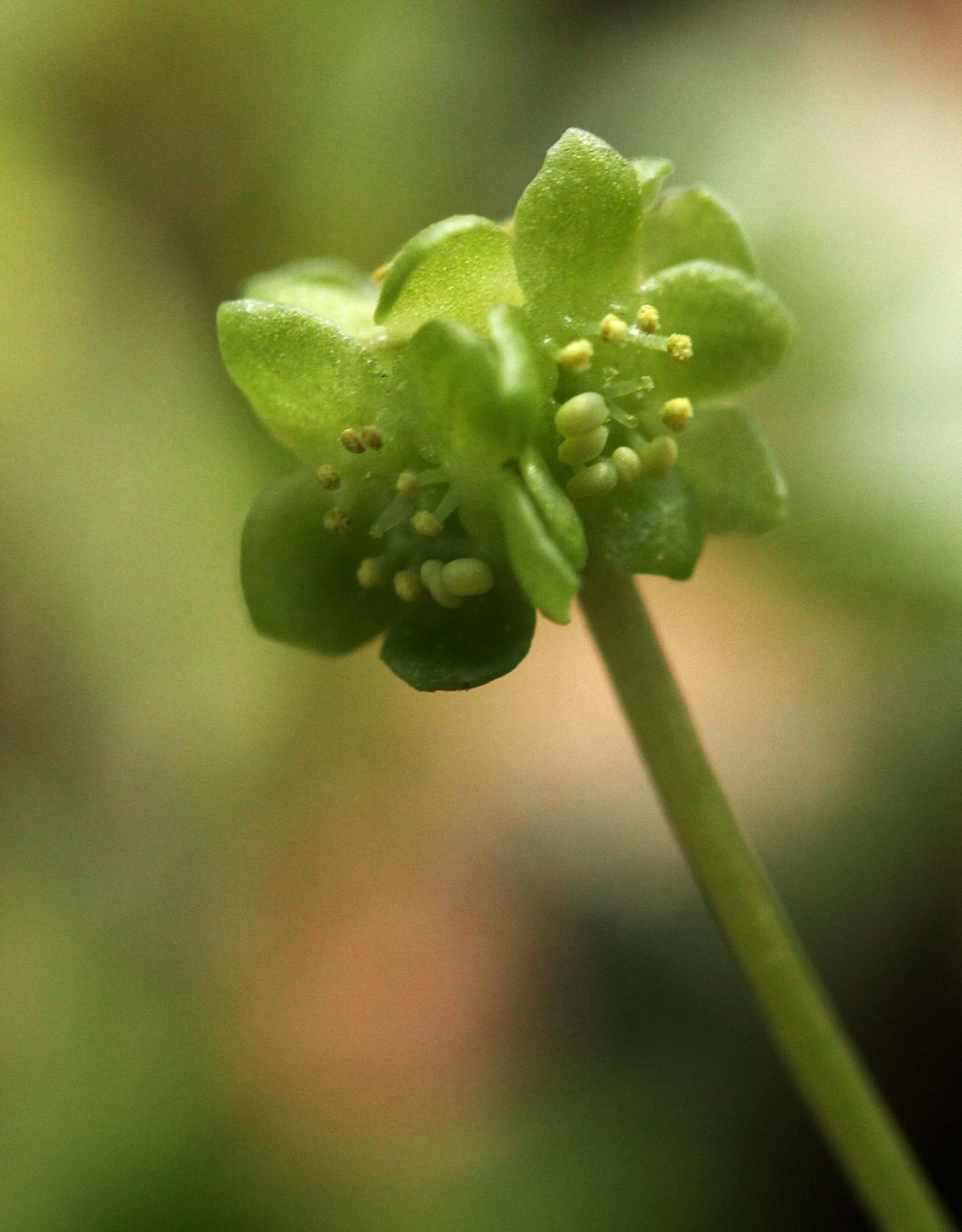
Begin looking at the ground for the tiny things, particularly around trees on the right bank. Moschatel can easily be overlooked as, at first glance, it looks like grass. This intricate little green plant has a square like a box or dice sitting atop a slender smooth stem. This gives it the common name of ‘Town-hall Clock’. This is where you’ll need to get down, almost flat on the ground. Look closely and each face is made up of a green and yellow flower. Each side flower has five petals, the top one has four. Such intricacy for such a little plant.
Violets and Strawberries
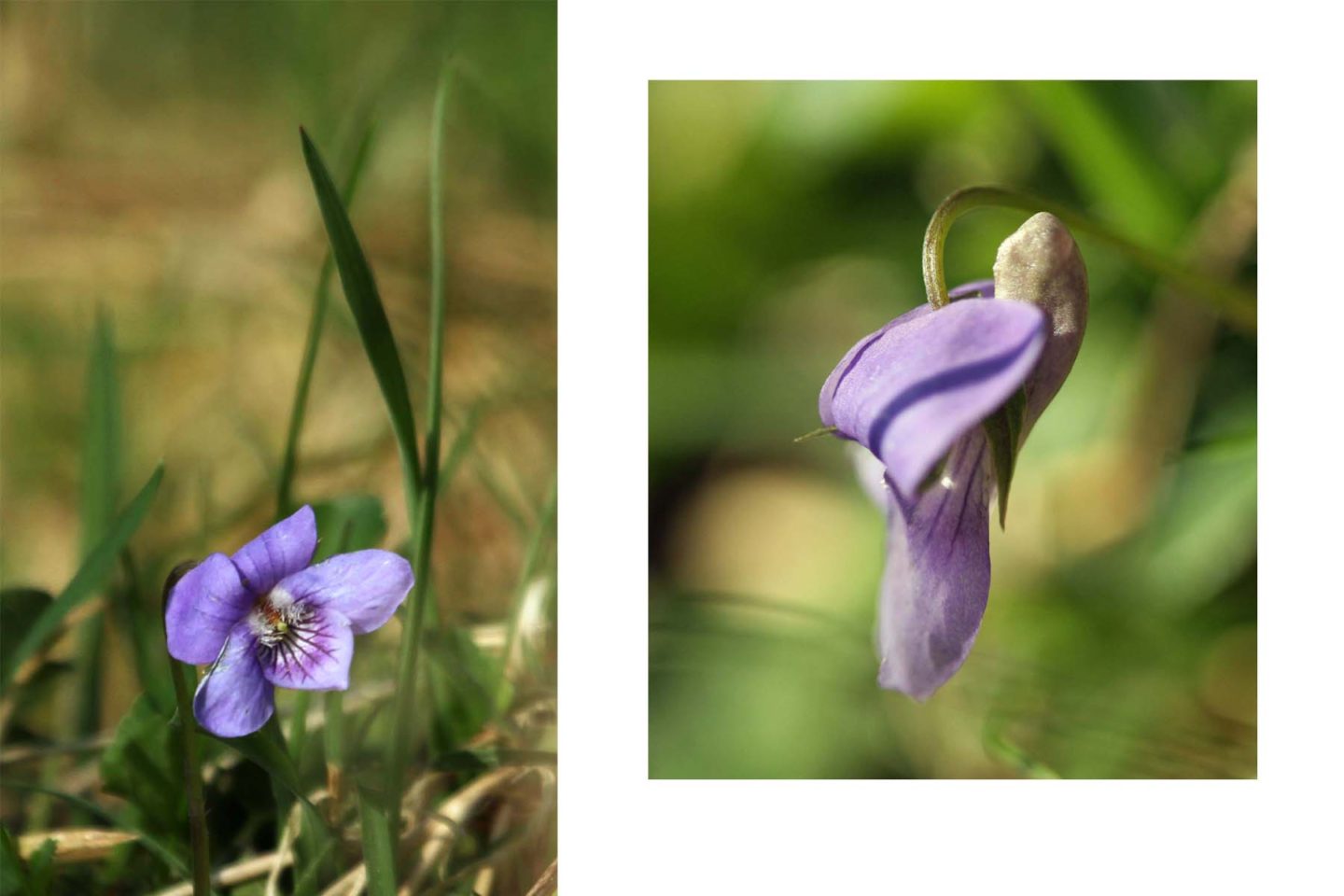
Common Dog Violets will be poking their heads through the undergrowth in and around the Moschatel, spreading down the banking as the season moves on. They look like someone has thrown them, scattering them in seemingly random places
Amongst the Moschatel and Common Dog Violets is a teeny tiny flower, the Barren Strawberry. Nestling amongst the grasses, leaves, twigs and mosses, it is really hard to see but once you find one flower, you’ll see several. The flower is very like the Wild Strawberry but has gaps between the white petals. True to its name, it is ‘barren’ and doesn’t bear the red fruits like our idea of a ‘normal’ strawberry. The flowers seem to half-bury themselves, poking their heads out between twigs, leaves and grass. Blink and you’ll miss them!
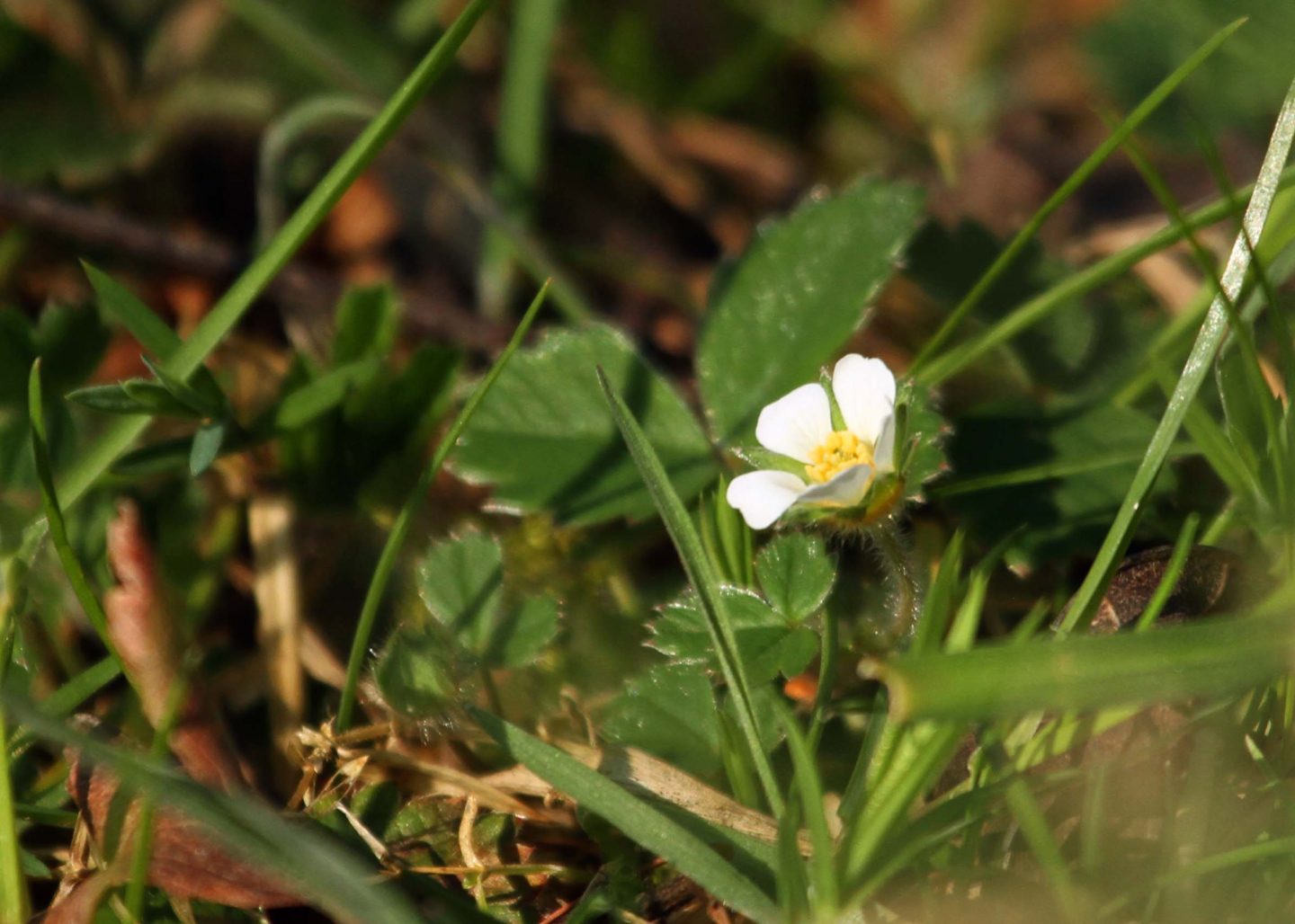
Barren Strawberry nestling amongst the grasses
Wood Sorrel
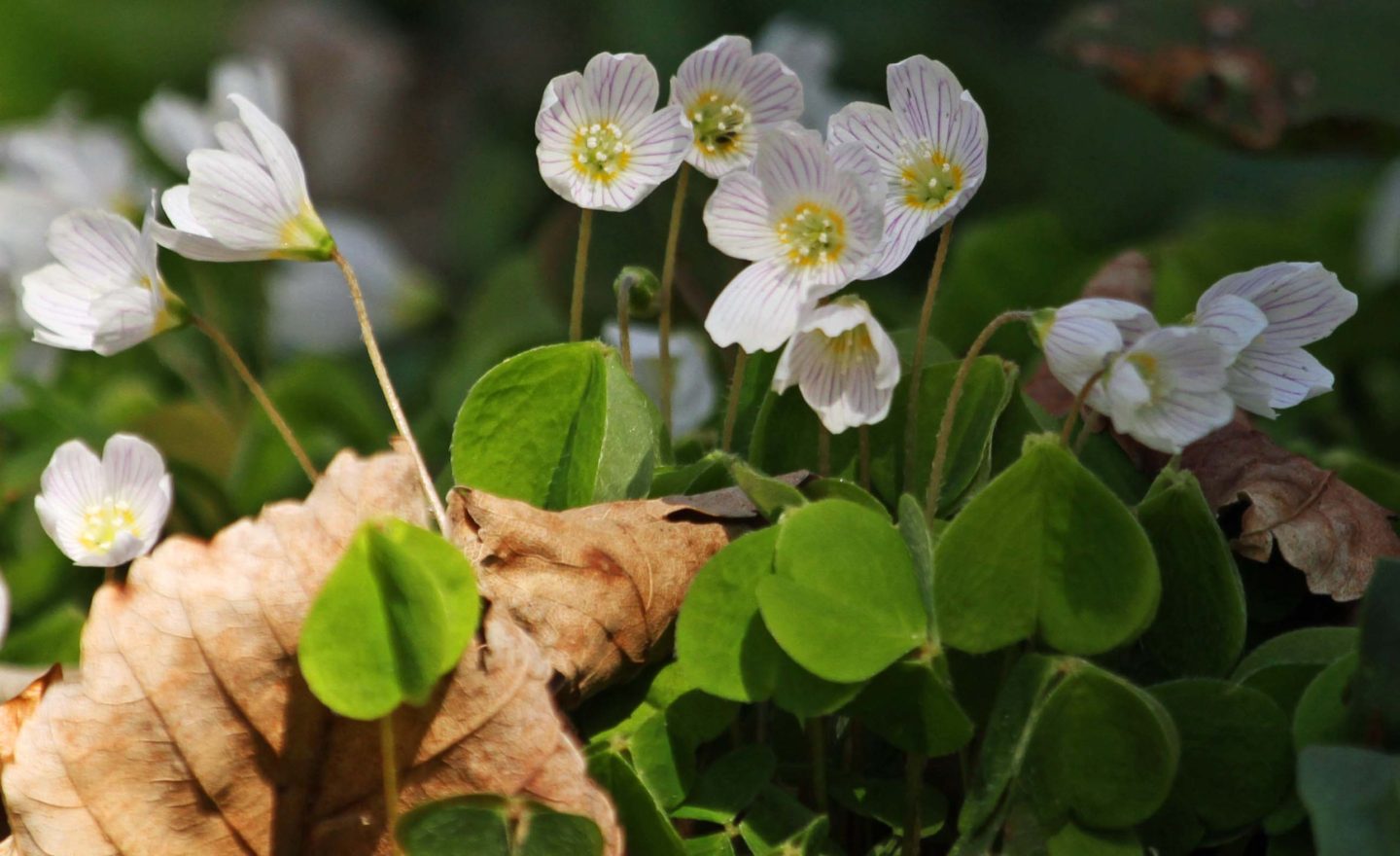
Wood Sorrel is present on both sides, all along the Hallowe’en Walk. The leaves are easy to spot. Clustering together, bright green compared to the forest undergrowth and mosses, I always think they look like shamrocks. If they are closed up, it’s going to rain so pick up the pace a little! Small and delicate, drooping white bells with lilac veins raise their heads a little, opening slightly at the sight of the sun. A few years ago, the Forestry Commission thinned out the forest above the Hallowe’en Walk and I thought that the swathes of Wood Sorrel was lost forever but I was wrong. It has bounced back and is doing well.

Side view of the tiny Wood Sorrel

Wood Sorrel tucked into the roots of a tree
Blossoms & a cuppa

Midway the mountain bike track crosses the path. Take care here especially if your eyes are to the ground looking at the flowers. Going uphill, the cyclists are fairly slow but coming downhill and across the path, they can be very, very quick. Continue on the path until you drop down to a tarmac road. Turn right. Walk along the edge of the road (it is a private forestry road used occasionally by logging wagons and local vehicles so again, take care) with Wild Cherry trees to your right, which may be in blossom, and a tennis court to your left. Look at the base of the Wild Cherry trees and you’ll see clumps of Lords and Ladies. The spathe isn’t quite out yet but the leaves are a deep, glossy green and are unmistakeable.
Follow a sharp right hand bend, passing the houses of Low Dalby on your right and the village green to your left. Turn right in front of the last house towards the buildings of the courtyard. Turn left into the courtyard itself. There is a cafe here so a great opportunity to buy a cuppa and take a seat at a picnic bench. Continue down the courtyard diagonally right and around the last building on your right but in front of the building directly in front of you. A Pied Wagtail often sits on the roof. You’ll see the information board for the small Dalby Forest garden. Here is planted a variety of interesting woodland plants. Walk through the garden on the bark chipping walkways to the back which overlooks a spring flowing into Dalby Beck.

Wild Cherry blossom against the forest
Down by the water’s edge

Opposite-leaved Golden Saxifrage hanging over the edge of the spring
Below you, the floor is covered with Opposite-leaved Golden Saxifrage. Poking up through it are the chunky, unmistakeable stems of Butterbur. These are, by far, the biggest, most showiest blooms of all on this walk and may take some getting used to after all the tiny stuff. You cannot fail to miss them!

Butterbur rising up through Opposite-leaved Golden Saxifrage and hugging the bank of the spring
Wood Anemones

Carpets of Wood Anemones, slaves to the sun, cover patches on both sides of the spring. These delicate, pink-kissed, white flowers with yellow centres are stunning in their own right but when in a group, they are spectacular. Choose a sunny day and they will be at their best…open flowered, facing the sun and just enjoying life! I like to think that locals who came before me hundreds of years ago will have admired the same patches of flowers as they are a good indicator of ancient woodland and spread slowly. These swathes stretch along either side of the spring so the colony must be at least 300 years old by my reckoning!

Not so sleepy hollow
Make your way back through the garden and turn left over a wooden bridge. Look over the bridge back to the spring and you’ll see the bright yellow flowers of Marsh Marigold hugging the shaded waterside. Wrens, Robins, early Chiffchaffs, Greater Spotted Woodpeckers, Finches and Tits, Treecreepers,Wood Pigeons and Crows are all common in this hollow by the spring and don’t seem to mind you staring at them. There is also a high chance of catching sight of early butterflies such as Peacocks flying around the flowers. It is a busy place!
Look over the other side of the bridge, towards the cycle jet wash (not a pretty sight, I admit), on the banking between you and the jet wash will be a few stems of Butterbur, clinging to the bank for dear life. They will soon be overtaken by their leaves which grow so large, they were once used to wrap butter pats to keep them cool.
Continue across the bridge, over the forest drive to arrive back to the start at the car park.
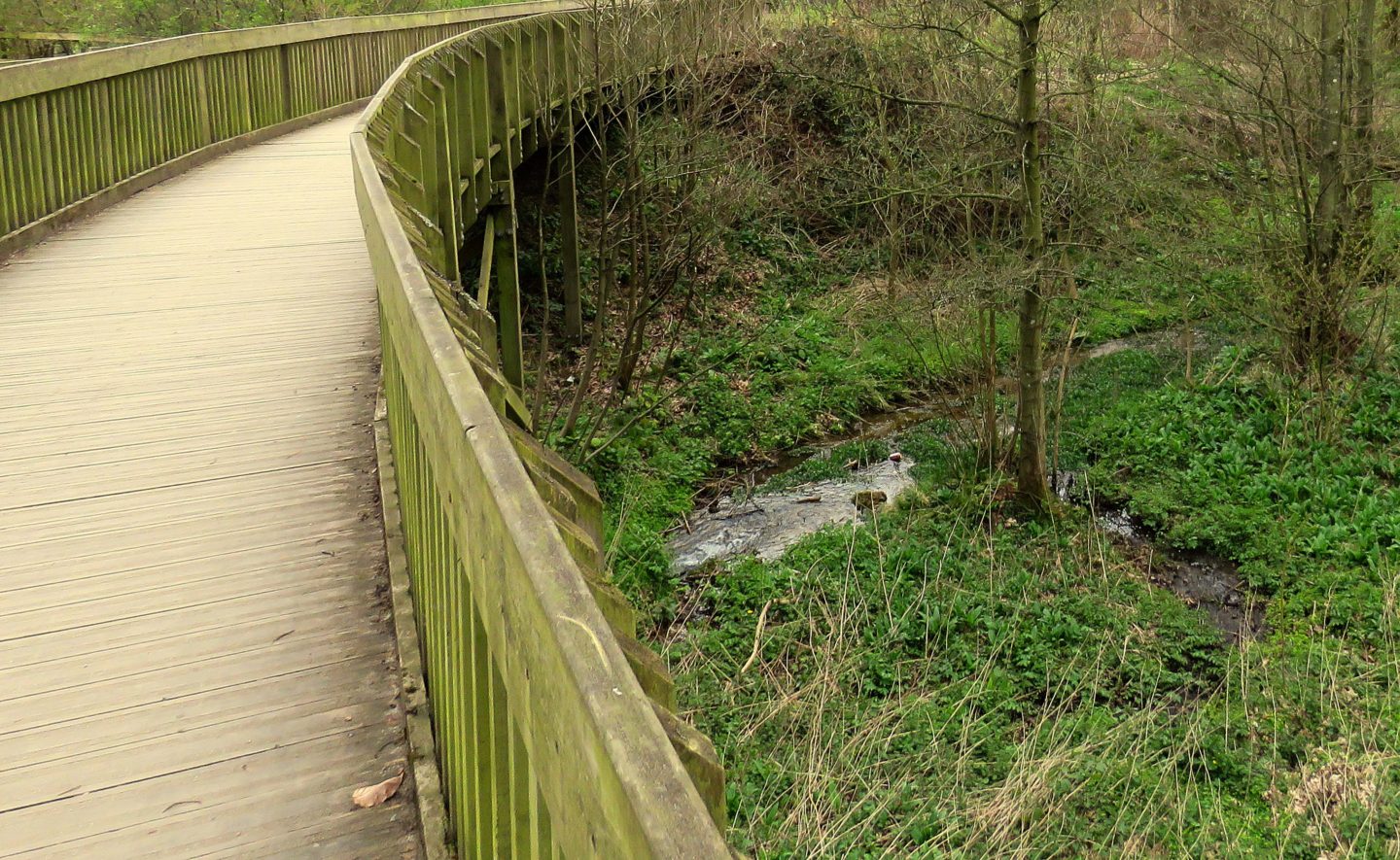
Looking over the spring from the bridge
If it has been unseasonably mild then other flowers may be pushing through….Lesser Stitchwort will join the Common Dog Violets on the Hallowe’en Walk and Ramsoms join the Butterbur down by the spring to compete with the Wood Anemone for the ‘best swathe of white flowers’ award. They certainly win in the smell stakes. Primroses and cowslips are next along with the exotics like the Early Purple Orchid. Certainly keep your eyes open for these. But, for now, the tiny things are huge! Let me know what you find.
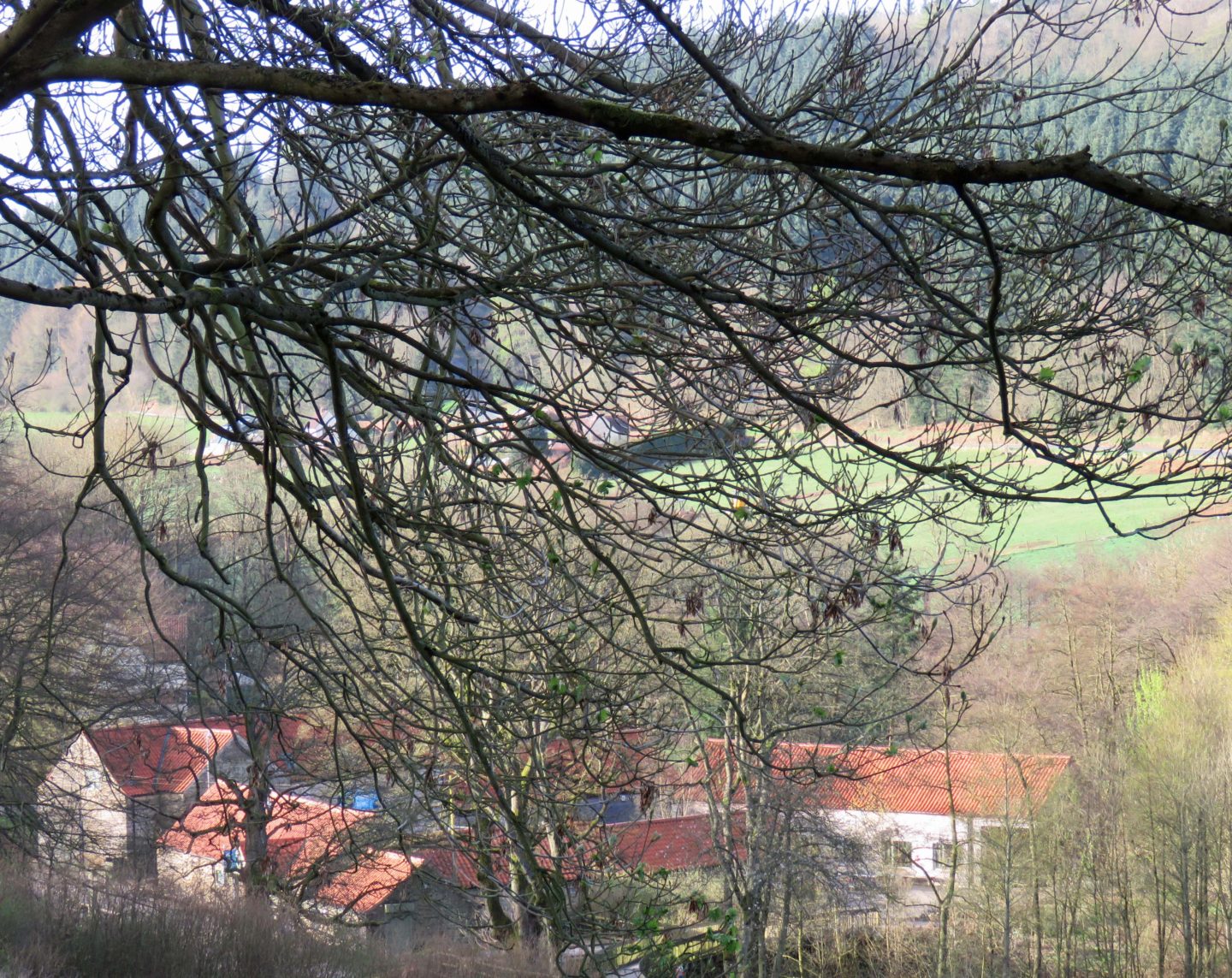
Looking down from the Hallowe’en Walk towards The Courtyard
